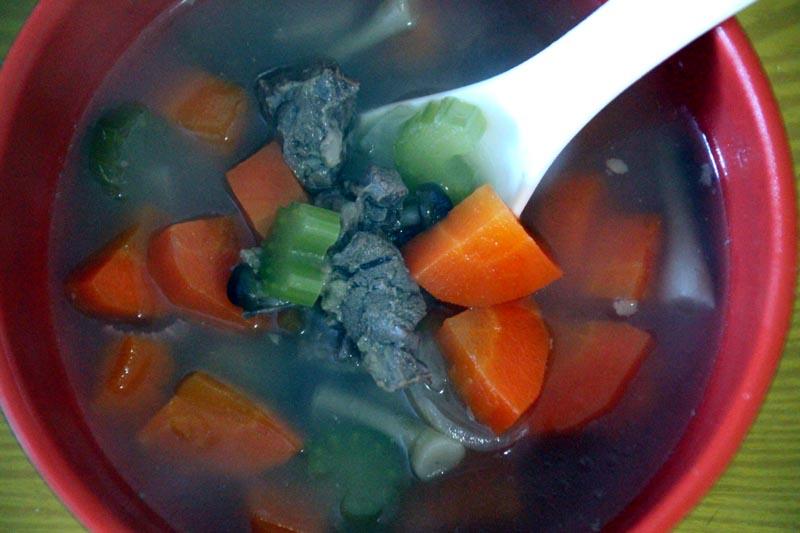So, at last we reach the end, not necessarily of this topic but the end of the animal.
The tail end, so to speak.
Pig's Tail
Oxtail is eaten around the world as are the tails of pigs and, less often, sheep and lambs. The first thing to say is that very few oxtails today are the tails of oxen (castrated male bovines used for draught purposes. Mechanization did away with that). They were in the past, but today are usually the tails of beef cattle of either gender. Oxtail soup is a favourite comfort food in my family – either freshly made or canned. I was brought up on the latter.

Oxtail and Vegetable Soup
But a whole oxtail is a large appendage and butchers are often unwilling to cut them and have customers battling over the thick cuts from the ass end and not wanting the parts from further towards the end - the tail of the tail! So they cut it into slices and mix them.
A pig tail is much more manageable and, in my view, just as good if not better. But I must say that pig's tails are not always curly. They only curl after the tail is bitten by another pig in hierarchy fights.
Again, they need depilating and should be well washed before cooking.
Should you lay your hands on some good oxtail, then this web page from The Spruce Eats has some valuable advice and information. As for the pork tails, I am very much in favour of this treatment with a Chinese twist.
They can also be deep fried or slow braised. The interwebs are full of suggestions.
How do you use them?
Lamb's tails (besides being a cocktail) are highly prized in Western China and Mongolia for their tasty fat. Chunks of sheep / lamb meat and pieces of the animal's tail fat are interspersed on skewers and grilled over charcoal. These skewers can be bought at night markets across China. Visitors to Xi'an, home of the Terracotta Warriors, should partake!



